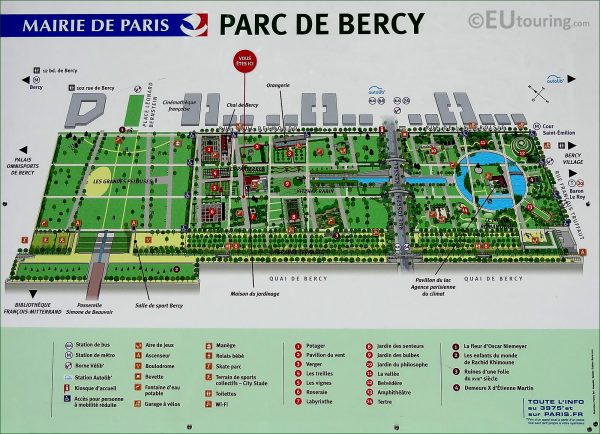
Parc de Bercy – Promenade Plantee – Parc de la Villette
Vision and political will are a good combination. This is the case of Paris 2018, looking into the future with pragmatic imagination.

Parisians have a high consciousness level of sustainability and climate change. They are now led by their Mayor, Anne Hidalgo, who has decided to turn their city into a green capital of the world. Besides seven major projects under construction to transform famous squares into pedestrian and bike-friendly areas, urban farming has now new legislation that promotes growing vegetables on roofs and public spaces.

in the accompanying documentary, we have chosen three examples of green urbanity: the Parc de Bercy, the Parc de la Villette, and the Promenade Plantee. They show how building green, when integrated with urban design, architecture and public art, can be transformative.
PARC DE BERCY
Designed by architects Bernard Huet, Madeleine Ferrand, Jean-Pierre Feugas, Bernard Leroy, and by landscapers Ian Le Caisne and Philippe Raguin, the park is made of three gardens connected by footbridges: The “Romantic Garden”, which includes fishponds and dunes; The “Flowerbeds”, dedicated to plant life; and “The Meadows”, an area of open lawns shaded by tall trees.
In the north-east of the park stands the Cinémathèque Française (the former American Center) designed by Frank Gehry, and on the raised terraces are the 21 sculptures of Rachid Khimoune’s “Children of the World” installation, created in 2001 to honor children’s rights.
The park has also a covered skatepark and is adjacent to a major sports arena, the Palais Omnisports, with a sitting capacity of 20,000.

PARC DE LA VILLETTE
The Parc de la Villette is a 37-acre / 55 hectares area that houses one of the largest concentration of cultural venues in Paris. These include the Cité des Sciences et de l’Industrie (City of Science and Industry, Europe’s largest science museum), three major concert venues, and the prestigious Conservatoire de Paris.
The park was designed by Bernard Tschumi, a French architect of Swiss origin, who built it from 1984 to 1987 in partnership with Colin Fournier, on the site of the huge Parisian abattoirs (slaughterhouses) and the national wholesale meat market, as part of an urban redevelopment project. He conceived thirty-five architectural “follies“ to give a sense of orientation to the visitors.
In architecture, a folly is a building constructed primarily as an ornament but suggesting through its appearance some other purpose. One can only imagine what a system of follies could do for a city like Los Angeles, to provide orientation within its vast urban grid. Since the creation of the park, museums, concert halls, and theatres have been designed by several noted contemporary architects, including Christian de Portzamparc, Jean Nouvel, Adrien Fainsilber, Philippe Chaix, Jean-Paul Morel, and Gérard Chamayou. These include City of Science and Industry, ]La Géode, an IMAX theatre inside of a 36-meter (118 ft) diameter geodesic dome; The City of Music, designed by Christian de Portzamparc which opened in 1995 and it includes also a museum of historical musical instruments with a concert hall, also home of the Conservatoire de Paris; the Philharmonie de Paris which opened in January 2015 designed by Jean Nouvel.
PROMENADE PLANTÉE
The Promenade plantée (also called Coulée Verte – “Green Stream”) is an extensive green belt that follows the old Vincennes railway line. Beginning just east of the Opéra Bastille with the elevated Viaduc des Arts, it follows a 4.7 km (2.9 mi) (2.9 mi) path to the Bois de Vincennes.
At its west end, near the Bastille, the parkway rises above the surrounding area and forms the Viaduc des Arts, over a line of shops featuring high quality and expensive arts and crafts. The shops are located in the arches of the formerly elevated railway viaduct.
The design was created by landscape architect Jacques Vergely and architect Philippe Mathieux. The Viaduc des Arts was designed by architect Patrik Berger, who also designed the recently completed Canopy of Les Halles.
The project is an ultimate example of “walking urbanity,” with multiple experiences along its path. It includes different types of gardens, it traverses existing buildings, it crosses boulevards. Twenty years later, Promenade Plantee inspired the now successful High Line in New York.
The creation of a humane urban quality does not depend only on the quality of a city’s buildings. The design quality of open public spaces, way beyond landscape architecture, is critical. It demands imaginative long-term thinking accompanied by political vision and will.
























